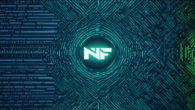
What is the purpose of NFTs
If you’re reading this article, chances are you’ve heard about Non-Fungible Tokens (NFTs) before. These digital assets have been making waves in the art world, as well as other industries such as gaming, music, and even collectibles. But what exactly is an NFT? And why would someone want to own one? In this article, we will explore the purpose of NFTs and its potential benefits for various industries.
What are NFTs?
An NFT is a digital asset that is unique, indivisible, and impossible to replace or counterfeit. It can be anything from a piece of art to a collectible card, a ticket to an event, or even a virtual property in a game. What makes an NFT so valuable is its rarity and uniqueness. Because only one NFT can exist, it becomes a highly sought-after item among collectors and enthusiasts alike.
NFTs are stored on a blockchain, which provides transparency and immutability to the asset. This means that once an NFT is created, it cannot be altered or deleted without leaving a permanent record of the change. The use of blockchain technology also ensures that NFTs are secure and tamper-proof.
The Benefits of NFTs
Now that we have a basic understanding of what NFTs are, let’s explore their potential benefits for various industries.
Art World
One of the most well-known applications of NFTs is in the art world. Artists can use NFTs to create and sell unique digital artwork, which can be anything from a painting to an animation or even an interactive experience. The rarity and uniqueness of NFTs make them highly desirable among collectors, allowing artists to monetize their work in new and innovative ways.
Gaming Industry
Another industry that has been heavily impacted by NFTs is gaming. NFTs can be used to create virtual items or assets within games, such as rare weapons or characters. These NFTs can then be bought and sold among players, creating a new market for in-game items.
Music Industry
The music industry is another area where NFTs are gaining popularity. Musicians can use NFTs to sell exclusive content, such as limited-edition tracks or even concert tickets. This allows musicians to connect with their fans on a deeper level and create new revenue streams.

Real Estate Industry
The real estate industry has also been impacted by NFTs. NFTs can be used to represent ownership of physical assets, such as property or land. This allows for a new way of buying and selling real estate that is faster, cheaper, and more transparent than traditional methods.
Case Studies
To illustrate the potential of NFTs, let’s look at some real-life examples of how they are being used in various industries.
Art World:
The Sale of “The First Cryptopunk”
In 2017, a rare piece of digital artwork known as “The First Cryptopunk” was sold for over $69 million at an auction at Christie’s. This artwork, which was created by artist John Watkinson, is a unique blend of animation and blockchain technology. The NFT represents ownership of the artwork, providing a new way for collectors to purchase and sell digital assets.
Gaming Industry:
The Sale of “Cryptokitties”
In 2017, the game “Cryptokitties” was launched on Ethereum, a blockchain-based platform that allows developers to create and sell NFTs. The game quickly became popular among players, with millions of cats being bred and sold within the first few weeks of launch. This success allowed the creators of the game to generate millions of dollars in revenue and paved the way for other games to use NFTs to monetize their content.
Music Industry:
The Sale of “Rarible”
In 2021, the first ever NFT music album, “Rarible,” was sold at an auction on OpenSea, a platform that specializes in selling NFTs. The album, which features music from various artists, was sold for over $100,000, highlighting the potential of NFTs as a new way for musicians to monetize their content.
Real Estate Industry:
The Sale of “The First NFT Property”
In 2021, the first-ever NFT property was sold at an auction on OpenSea, with ownership of the property being represented by an NFT. The property, which is located in CryptoVoxels, a virtual world built on Ethereum, was sold for over $500,000, highlighting the potential of NFTs as a new way to buy and sell real estate.
Comparing NFTs with Traditional Assets
Traditional Assets:
- Require a physical presence
- Can be counterfeited or replicated
- Have limited transparency and immutability
- Are subject to traditional legal and financial systems
NFTs:
- Do not require a physical presence
- Cannot be counterfeited or replicated
- Have complete transparency and immutability
- Exist outside of traditional legal and financial systems
The Future of NFTs
As we have seen, NFTs have the potential to revolutionize various industries by providing a new way to buy, sell, and monetize digital assets. The future of NFTs is bright, with many experts predicting that they will become a major part of our daily lives in the coming years.
Summary
NFTs are a powerful tool that have the potential to revolutionize various industries by providing a new way to buy, sell, and monetize digital assets. By understanding the potential of NFTs and their unique features, we can begin to explore new ways of using them in our daily lives.







